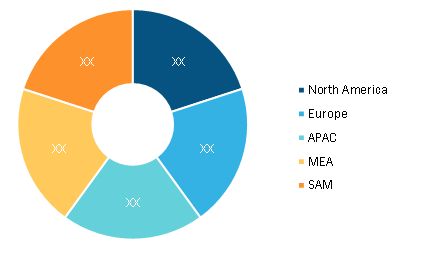According to our latest market study on “Aerospace and Military Fiber Optic Market Forecast to 2028 – COVID-19 Impact and Global Analysis – by Component, Application, and End Users,” the aerospace and military fiber optic market is expected to grow from US$ 4,623.81 million in 2021 to US$ 7,208.36 million by 2028; it is estimated to grow at a CAGR of 7.0% from 2022 to 2028 during the forecast period.
A fiber optic cable is a bundle of optical threads with a diameter (single thread) larger than the diameter of a human hair strand; each of these threads may transfer data encoded as light waves. Fiber optics are replacing metal optics in aerospace and military applications due to their ability to withstand severe environments. The use of fiber optic in data transmission enables the transmission over a long distance, confers immunity to electromagnetic interference, and supports high bandwidth with high rates of speed and no data loss.
The aerospace and military fiber optic market buyers include military forces, aerospace companies, homeland security agencies, and commercial airline enterprises. The military forces procure fiber optic cables to build strong communication network systems and radar systems. Military forces have made significant investments worldwide toward developing and procuring fiber optic cables and connectors. Moreover, the military and homeland security forces choose to switch between fiber optic suppliers based on price, technology, and requirement parameters. As the end users of the market can choose their suppliers, the bargaining power of the buyers is high in the market and is expected to remain high in the coming years.
The major stakeholders in the global aerospace and military fiber optic market ecosystem include components, aerospace, and military fiber optic manufacturers, and end users. Aerospace and military fiber optic component suppliers provide products such as silica, glass, and optical sensors. Any disruption in the supply of the components negatively impacts the production of the final product. Thus, the component manufacturers play a crucial role in the aerospace and military fiber optic market ecosystem.
Impact of COVID-19 Pandemic on Aerospace and Military Fiber Optic Market Growth
The impact of the COVID-19 pandemic on various industries, such as military, defense, aerospace, and manufacturing, was severe. These industries are still trying to recover from the damage the COVID-19 pandemic caused. Due to the temporary halt across various production facilities in the aerospace industry and military vehicle or equipment sector, the procurement of fiber optic cables and connectors was impacted. They also influenced supply chains and logistics due to complete or partial halting operations in various countries. The COVID-19 pandemic was the key reason for supply chain disruptions, loss of production, and declined revenue for several enterprises globally.
Since the beginning of the COVID-19 outbreak, the aerospace & military industry was among the most severely hit sectors globally. Moreover, the COVID-19 outbreak had put the shipping and marine industries in the worst possible position since their workforces were shut down for safety and to prevent the spread of COVID-19, which directly impacted the aerospace and military fiber optic market share. Companies operating in aerospace and military fiber optics had to make tough choices to sustain during the COVID-19 and in post-pandemic recovery periods. Thus, the COVID-19 pandemic negatively affected the growth of the market.
The aerospace and military fiber optic market is segmented into components, application, end user, and geography. Based on components, the market is segmented into cables and connectors. Based on application, the market is categorized into radar systems, flight management systems, in-flight entertainment systems, communication systems, electronic warfare, cabin interiors, and avionics. Based on end user, the market is segmented into commercial aviation, military, and general aviation. On the basis of geography, the market size is primarily segregated into North America, Europe, Asia Pacific (APAC), the Middle East & Africa (MEA), and South America.
Raytheon Technologies Corporation, Amphenol Corporation, Carlisle Interconnect Technologies, Prysmian Group, and ITT INC. are a few of the aerospace and military fiber optic market players. In addition, several other important market players were studied and analyzed during the course of this study to get a holistic view of the global aerospace and military fiber optic market growth and its ecosystem.
Aerospace and Military Fiber Optic Market Share – by Region, 2021

Aerospace and Military Fiber Optic Market Emerging Trends 2034
Download Free Sample
Aerospace and Military Fiber Optic Market Size and Forecast (2021 - 2034), Global and Regional Share, Trend, and Growth Opportunity Analysis Report Coverage: By Component (Cables and Connectors), Application (Radar Systems, Flight Management Systems, In-flight Entertainment Systems, Communication Systems, Electronic Warfare, Cabin Interiors, and Avionics), and End-User (Commercial and Military)
Aerospace and Military Fiber Optic Market Emerging Trends 2034
Download Free SampleAerospace and Military Fiber Optic Market Size and Forecast (2021 - 2034), Global and Regional Share, Trend, and Growth Opportunity Analysis Report Coverage: By Component (Cables and Connectors), Application (Radar Systems, Flight Management Systems, In-flight Entertainment Systems, Communication Systems, Electronic Warfare, Cabin Interiors, and Avionics), and End-User (Commercial and Military)
Contact Us
Phone: +1-646-491-9876
Email Id: sales@theinsightpartners.com